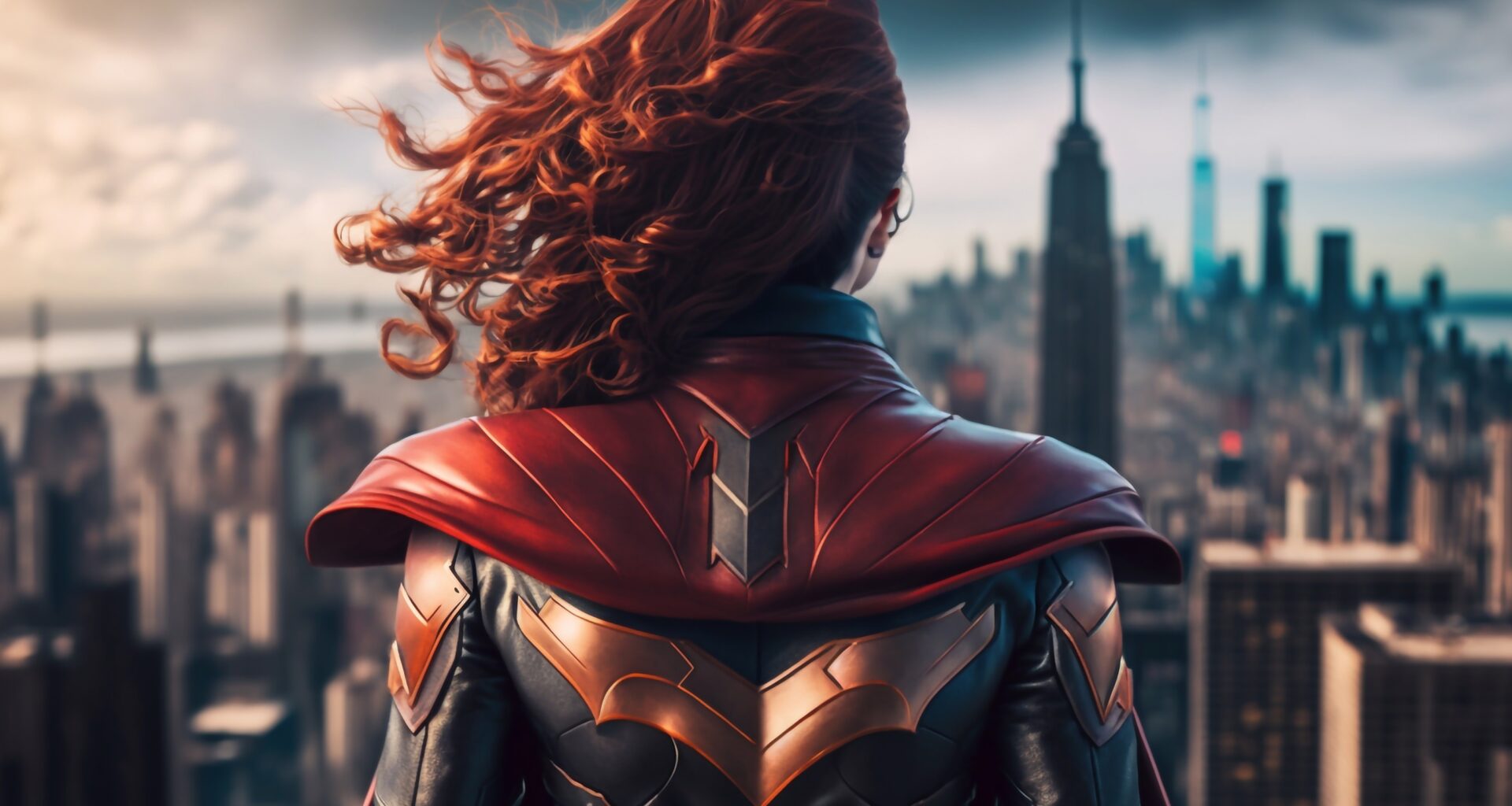Feminine archetypes refer to conventional, prototypical models of women that pervade literature and film. They are enduring, shared representations that encapsulate certain traits, behaviors, and roles typically associated with women, drawn from cultural and collective human experience.
These archetypes recur in various storytelling mediums, expressing the depth, complexity, and diversity of female characters. The portrayal of these archetypes exerts a significant influence on society’s perception of womanhood, shaping expectations, assumptions, and values surrounding femininity.
Consequently, the understanding of these archetypes is essential in understanding societal attitudes toward women. Here are a few of the 13 feminine archetypes that shape society’s perception of womanhood.
- The Caregiver
The Caregiver, epitomized by characters such as Marmee in ‘Little Women’ or Mrs. Potts from ‘Beauty and the Beast,’ embodies nurturing, selflessness, and altruism. This archetype is often portrayed in domestic settings, where the characters are vested with the responsibility of caring for others.
However, this archetype can inadvertently foster narrow and constraining perceptions of womanhood by overemphasizing self-sacrifice and servitude. When consistently linked with femininity, it risks cementing the belief that women are inherently caretakers, thus fostering gender stereotypes that can limit the roles women occupy in society.
- The Maiden
The Maiden, exemplified by characters like Snow White and Juliet Capulet from Shakespeare’s ‘Romeo and Juliet,’ symbolizes purity, innocence, and often, naivety. The portrayal of these characters in literature and film often revolves around themes of transformation and self-discovery.
This archetype can exert an unhealthy influence on perceptions of womanhood by promoting unrealistic ideals of purity and innocence. It can also create the misleading notion that a woman’s worth is inherently linked to her youth and beauty, thereby leading to a devaluation of maturity, wisdom, and experience.
- The Seductress
The Seductress archetype, represented by figures such as Cleopatra or Scarlett O’Hara in ‘Gone with the Wind,’ embodies sensuality, confidence, and often, manipulation. The narratives often focus on their ability to use their attractiveness or charm to influence others, especially men.
While this archetype can celebrate female sexuality and autonomy, it can also contribute to harmful perceptions of women as manipulative or deceptive. It risks perpetuating the notion that a woman’s power is primarily derived from her physical attractiveness and ability to seduce, thereby narrowing the scope of female empowerment and agency.
- The Wise Woman
The Wise Woman, as portrayed by figures like Gandalf’s feminine counterpart Galadriel in ‘The Lord of the Rings’ or The Oracle in ‘The Matrix,’ symbolizes wisdom, guidance, and spiritual insight. This archetype often assumes the role of a mentor, helping other characters navigate their paths.
While this archetype promotes the association of wisdom and spiritual depth with femininity, it can also inadvertently create an unrealistic expectation for women to always provide emotional labor and guidance. It risks perpetuating the stereotype of women as inherently nurturing and selfless, reinforcing restrictive gender roles.
- The Warrior
The Warrior, represented by characters like Katniss Everdeen in ‘The Hunger Games’ or Diana Prince in ‘Wonder Woman,’ embodies strength, bravery, and determination. These characters challenge traditional gender roles by assuming active roles usually associated with male characters.
This archetype can help dismantle traditional gender norms by portraying women as strong and capable. However, when not carefully portrayed, it can inadvertently support the notion that women can only gain empowerment and respect by adopting traditionally masculine traits and roles, thus reinforcing binary and restrictive gender norms.
- The Rebel
The Rebel, also known as the Outcast, is embodied by female characters that challenge societal norms and expectations. This archetype can be seen in characters like Lisbeth Salander in ‘The Girl with the Dragon Tattoo’ or Offred from ‘The Handmaid’s Tale.’ These characters do not conform to traditional gender roles and expectations, thereby pushing against the status quo.
Despite the empowering nature of the Rebel archetype, it’s important to note the potential pitfalls in its portrayal. This archetype can inadvertently suggest that women who challenge societal norms are aberrations or outliers, thereby reinforcing, rather than dismantling, restrictive gender norms. It is, therefore, vital that the Rebel archetype is portrayed not as an exception but as a testament to the diverse ways in which womanhood can be experienced and expressed.
- The Lover
The Lover archetype, embodied by characters like Elizabeth Bennet in ‘Pride and Prejudice’ or Rose in ‘Titanic,’ places emphasis on love, romance, and passion. These characters often prioritize their emotional connections and relationships, signifying the depth and intensity of women’s emotional lives.
While this archetype celebrates the emotional depth and capacity of women, it risks promoting the perception that a woman’s worth or happiness is inherently linked to their romantic relationships. Thus, the careful portrayal of this archetype should depict love and relationships as part of a woman’s life, not her entire existence.
- The Creator
The Creator, epitomized by characters who are imaginative, innovative, or artistic, underscores the creativity often associated with femininity. Examples of this archetype include Jo March in ‘Little Women,’ who aspires to become a writer, or Maria from ‘The Sound of Music,’ who uses creativity to teach and connect with the children she cares for.
This archetype can be an empowering representation, celebrating women’s creativity, innovation, and artistic talent. However, it’s crucial to ensure this archetype doesn’t perpetuate the notion that women are primarily responsible for bringing beauty, harmony, or creativity into the world, a stereotype that could reinforce restrictive gender roles.
- The Explorer
The Explorer is represented by women who seek adventure, knowledge, or personal growth. Characters such as Hermione Granger in the ‘Harry Potter’ series or Rey in the ‘Star Wars’ franchise embody this archetype by challenging the stereotype of women as passive or domestic.
This archetype can contribute to the dismantling of traditional gender norms by portraying women as active, curious, and daring. However, care must be taken not to depict the Explorer archetype as an anomaly, thus reaffirming the stereotype that women are generally passive or compliant.
- The Ruler
The Ruler archetype is characterized by women in positions of power and leadership, such as Daenerys Targaryen in ‘Game of Thrones’ or Queen Elizabeth II in ‘The Crown.’ These characters highlight the potential for women to lead, govern, and exert influence.
While this archetype can be empowering by demonstrating women’s capacity for leadership, it also risks promoting the idea that power must be exercised in traditionally masculine ways. In avoiding this, the Ruler archetype should encompass a diverse range of leadership styles, demonstrating that power and authority can be wielded effectively in ways that align with traditionally feminine qualities such as empathy, collaboration, and nurturing.
Conclusion
Feminine archetypes in literature and film play a crucial role in shaping societal perceptions of womanhood. They encapsulate a variety of traits and roles associated with femininity, spanning from the nurturing Caregiver to the powerful ruler.
While these archetypes can highlight the diversity and depth of female characters, they can also foster narrow and harmful stereotypes about women. As such, the portrayal of these archetypes calls for a nuanced approach that both celebrates and critically examines the multifaceted nature of femininity. More importantly, it becomes crucial to continually evolve these archetypes to reflect and promote a more inclusive and diverse understanding of womanhood.





